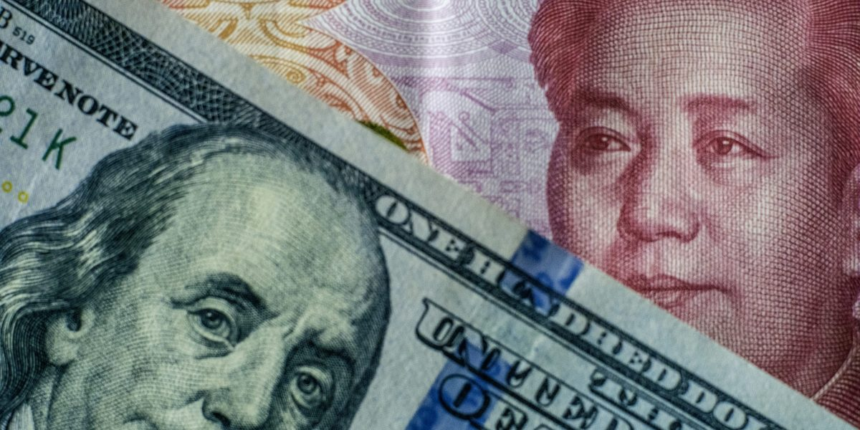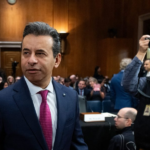Financial innovation has come full circle. The blockchain is bringing the U.S. back to the era of private money, when banks and companies could issue their own currencies. This time, instead of gold and silver coins, corporate America is eager to issue their own stablecoins.
The U.S.’s decision to embrace cryptocurrency through legislation like the GENIUS Act doesn’t just matter domestically. Washington’s move is placing pressure on countries around the world to signal their own stance on stablecoins and cryptocurrency.
In recent months, financial officials and academics within China have spoken up on the need to at least consider authorizing stablecoins, which Zhiguo He, a professor of finance at Stanford University, says is motivated by the “fear of missing out.”
And on Friday, the autonomous Chinese city of Hong Kong—which is betting on cryptocurrencies to bolster its status as a financial center—will start accepting applications for a Hong Kong-dollar backed stablecoin, potentially opening the door for a renminbi-backed token too.
With the U.S. going all-in on crypto, Beijing now faces a difficult decision: Does it match the U.S.’s risky bet on a stablecoin-centric future? Or does it play it safe, and risk missing out on cutting-edge financial technology?
“Trump has done a 180 for the United States and just said, ‘deregulate, deregulate, deregulate,’” says Harvard professor and former IMF chief economist Kenneth Rogoff.
The U.S.’s sudden crypto-happy stance could worry other nations. Dollar-backed stablecoins will be appealing in “really poor countries where people don’t trust the currency and central bank,” says Paul Blustein, journalist and author of King Dollar: The Past and Future of the World’s Dominant Currency. But even countries with strong local currencies could face a future where “citizens prefer to transact with this type of instrument.”
But China doesn’t want to find itself behind the curve—or behind the U.S.—if stablecoins and blockchain technology really are the future of finance.
“It’s not the fact that the U.S. is going into crypto, per se, that matters,” Evan Auyang, group president of Hong Kong-based blockchain technology company Animoca Brands, says. “It’s really what started as a result of this change…Stablecoins became institutional” after gaining legitimacy from the U.S. (Animoca Brands intends to apply for a license to issue stablecoins in Hong Kong.)
After chipping away at the dollar’s global dominance for decades, China does not want to give the U.S. an opportunity to regain ground.
“They’re very concerned about the U.S. exercising power, expanding the use of the dollar,” says Rogoff.
China has tried to promote greater use of the renminbi for cross-border trade, with limited success. Trade with isolated countries like Russia and Iran may be conducted in the renminbi, but most countries in the world still prefer using the U.S. dollar. The popularity of dollar stablecoins could “smother” Beijing’s efforts to develop its own financial networks, Rogoff says.
But even if Beijing is open to launching a stablecoin, it must overcome another hurdle: its closed capital account, which means officials can’t authorize a Chinese yuan renminbi (CNY)-pegged stablecoin.
There are “still a lot of concerns over capital flight issues” that make the liberalization of China’s capital account unlikely, Auyang says.
“Hong Kong is pegging to the USD. So, in some sense, they are basically helping the U.S.,” He, from Stanford, explained. “This is perhaps why Beijing [could say], when you do the HKD [stablecoin], I want you to do the CNH as well.”
Currency experts are worried about how stablecoins could end up posing a threat to the economy—whether in the U.S. or in China.
Blustein points to the risk of “currency substitution.” If the appeal of stablecoins outweighs the appeal of the local currency, it “screws up the central bank’s ability to control the economy,” he argues, as everyone is engaging in transactions in an instrument outside the bank’s control.
And without a central bank or lender of last resort, stablecoins are vulnerable to runs—users rushing to redeem their tokens for fiat currency all at once. The possibility of a stablecoin crisis is “very parallel to the U.S.’s free banking era in the 1800s,” says Rogoff.
“The risk of a financial crisis is high,” he says.
Blustein, for his part, is less worried about stablecoins messing things up—in part because they make up “a tiny part of international payments.”
“Stablecoins cannot possibly buy that many short-term treasuries” to compete with central banks and multinational companies, he suggests.
Another person expressing some skepticism about stablecoins? Eddie Yue, the head of the Hong Kong Monetary Authority and the city’s de facto central banker.









